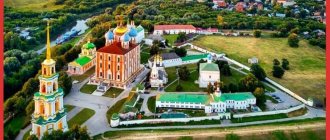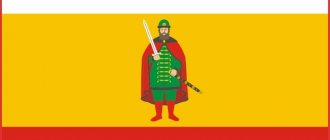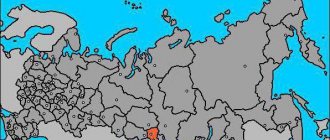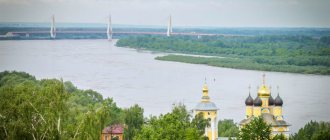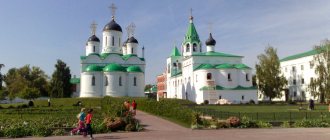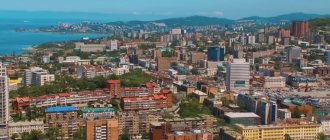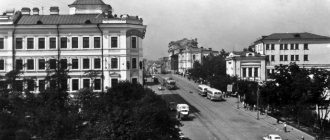The holiday is full of numerous events. With the participation of the city administration, flowers are laid at memorial sites on this day. Competitions are organized among parachutists, football players, and athletes. The winners are awarded cups on behalf of the mayor. Street musicians play famous works. Charitable organizations conduct events that draw attention to current problems of the locality.
Literature connoisseurs are invited to readings of classic and modern works. A family entertainment program brings together children and parents. In the evening, balloons are launched. Popular performers perform on the square. The finale of the holiday is a colorful fireworks display.
According to the charter, Ryazan City Day is celebrated annually on the day established by the decision of the representative body of the locality. Usually the date is celebrated on the first weekend of August or September.
General information about the Ryazan region
The Ryazan region is one of 85 constituent entities of the Russian Federation, located in the center of the European part of Russia. Geographically, the region is located in the depression of two vast elevations - Central Russian and Volga.
The Ryazan region covers an area of 39,600 km². Here are the 3 largest rivers of Russia: Don, Oka and Tsna. They have a wide floodplain and overflow during the spring flood. The Oka divides the region into:
- The northern part is covered with dense thickets of coniferous and deciduous trees. The famous Meshchera National Park and the Prioksko-Terrasny Biosphere Reserve are located here.
- The southern part, a large area of which is occupied by forest-steppe.
The territory of the Ryazan region has many mineral deposits: limestone, marl, clay, sand, iron ore, coal, etc. Cement limestone, glass and quartz sand are mainly valued. Peat of excellent quality, which lies in a vast thick layer, is called the most important and most valuable.
Approximately 1/3 of the entire region is occupied by broad-leaved, coniferous and mixed forests. Climatic conditions: moderate continental. The air temperature here varies depending on the season from -20°C to +30°C.
During the year, 500 mm of precipitation is recorded, of which up to 35% is in the form of snow.
The Ryazan region is divided into 29 municipalities. The city of Ryazan is the administrative center, located 190 km south of Moscow. According to data as of January 1, 2021, the main city of the region is inhabited by 534,801 people, and the region by 1,098,257 people.
Russians, Tatars, Belarusians, Ukrainians, Armenians, Uzbeks and about 60 other nationalities live in the Ryazan region.
Since the times of Ancient Rus', the Ryazan land has been famous for its talented craftsmen and artisans. The people here have always been known for their ability to work hard. Many Russian scientists, Heroes of the USSR and Russia, holders of the Order of Glory were born and raised in the Ryazan region. During the Second World War, Ryazan volunteers actively joined the ranks of the Soviet Army and went to the front line.
Famous people - natives of the Ryazan region:
- I. Pavlov – academician scientist;
- S. Yesenin is a great Russian poet;
- K. Tsiolkovsky – the founder of Russian cosmonautics;
- I. Michurin – breeder, scientist, botanist;
- P. Semenov-Tyan-Shansky is a world-famous geographer and traveler.
Originally Ryazan women and men wore traditional costumes with bright red elements - the most beautiful outfits of Ancient Rus'. And in our time, Ryazan people sacredly preserve their traditions: folklore, crafts, rituals.
Numerous architectural and archaeological monuments have been preserved, restored and protected on the territory of the Ryazan region: ancient estates, mansions and churches, buildings from the times of the Soviet Union, etc. In total, there are more than 3,400 such objects.
History of the big city Poochya
Once in 1460, Khan of the Great Horde Akhmat wanted to take the city, but could not, since the Upper Posad of the Kremlin already existed, and around the bishop’s settlement and the Boris and Gleb Cathedral there was a fort - a fortified ring on the outside, built from a wooden palisade and watchtowers, where the market, inns, parish churches and inns.
The 16th and 17th centuries were marked for the Ryazan region by numerous peasant revolts against the landowners who ruined their farms. This plight of the peasants led to famine and epidemics in 1601-1603. In 1606, Ryazan and its suburbs joined the people's leader Ivan Bolotnikov.
In 1611, Ryazan was one of the first to initiate the convening of militias to liberate Moscow; Prokopiy Lyapunov was elected head of this movement, who led a detachment to Moscow.
In the 18th century, the Ryazan governorship was formed, and then the provinces. The city of Pereyaslavl-Ryazan received the name Ryazan with its own coat of arms, which depicted a warrior with a sword and Monomakh’s hat.
During the Patriotic War of 1812, people were evacuated to Ryazan and thirty thousand wounded were transported. Then 15 thousand Ryazan residents entered the fight against the enemy.
By 1860, 21.6 thousand people lived in Ryazan; its vice-governor at that time was M. E. Saltykov-Shchedrin. The population of the city doubled by 1897, the area of the city was 12 square meters. km.
After the revolution of 1917, widespread demonstrations and rallies began. The people did not have confidence in the Provisional Government due to the outbreak of famine. On October 30, 1917, Soviet power was established in Ryazan.
History of the Ryazan region
The Ryazan region takes its origins, according to archaeological excavations, from the Paleolithic (14–26 thousand years ago). Then the appearance of the first sites of ancient people was noted in this territory.
Initially, tribes of the Finno-Ugric group lived here. The modern names of many current geographical points and objects in the region originated from the names of these tribes.
Pereyaslavl-Ryazan (now the city of Ryazan) was first mentioned in 1095 in the Psalter. During the reign of Prince Oleg Ivanovich (1350–1402). The Ryazan region blossomed and became powerful. He, although not always effectively, competed with the Moscow principality and the princes ruling in it.
In 1445, the Ryazan Cossacks, who became the ancestors of the entire Russian Cossacks, were first mentioned in chronicles.
After the death of Prince Oleg Ivanovich, the Principality of Ryazan ceased to exist, and in 1521 it was included in the Moscow State.
Around 1709 , the Ryazan region became one of the districts of the Moscow province under the name of Pereyaslavl-Ryazan district.
the Ryazan province was created on February 28, 1778 . Starting from this day, the city of Pereyaslavl-Ryazan, which was the administrative center of the province, was named Ryazan. The Ryazan region was divided into 12 districts.
In 1929, almost the entire territory of the Ryazan Territory was included in the Moscow Region, and in 1937 a separate region was formed - Ryazan.
8 cities of the Ryazan region are included in the list of historically populated places in Russia.
Time for a change
During the period of internecine wars, the ancient Kremlin of Pereyaslavl-Ryazan occupied a small territory in terms of total area. And further along the ancient architectural buildings you can trace the growth of the Kremlin, because there were monasteries along the city’s borders. In the 14th century, the city developed in a southern direction towards the Spassky Monastery. In the 15th century, the Dukhovskoy Monastery was founded, which became the northern protrusion of the Kremlin. Then in different directions - Troitsky, Solotchinsky, etc. The Ryazan Kremlin soon consisted of a chain of fortposts. At that time it was a powerful system of defensive fortifications.
By the 14th century, Pereyaslavl became the largest city in Poochya and the capital of the principality; its heart was a wooden Kremlin with 12 towers, which represented the protection of the grand ducal court located inside and the houses of wealthy citizens.
The construction of the Kremlin with stone buildings began under Prince Fyodor Olegovich. The Assumption Cathedral was one of the first to be built; today, only the apses of the once white stone masonry of the 15th century, cleared for modern spectators, have survived from it.
Authorities of the Ryazan region
State power in the Ryazan region is exercised by:
- Regional Duma of a constituent entity of the Russian Federation. Consists of 36 deputies. The number of Duma deputies working on a professional permanent basis is determined by regional law.
- Government. Headed by the governor.
- Other executive bodies of state power formed in accordance with the Charter of the Ryazan Territory (Basic Law).
The judicial territorial authority in the region is represented by federal courts and regional justices of the peace. It is carried out by civil, administrative and criminal proceedings on the basis of the Constitution of the Russian Federation and federal legislation.
The townspeople held out for five days
During Batu's invasion, it was the defense of cities that caused maximum damage to the nomads. However, the khan had at his disposal battering machines borrowed from China, which decided the outcome of such battles.
On December 16, 1237, the assault on Ryazan began. The princely squad suffered heavy losses in the battle on the Voronezh River, and there were few professional warriors left in the city. But civilians, young and old, rose up to defend Ryazan.
For five days the Ryazan people fought to the death, increasing the losses of the attackers. But more and more new detachments, previously sent to capture other cities of the principality, approached Batu. The defenders of Ryazan had nowhere to wait for help.
On the night of December 20-21, 1237, Batu gave the order to begin the decisive assault. Rams and catapults were used. Having broken through the wall, the Mongols rushed inside.
Fierce hand-to-hand fighting broke out on the streets of the city. The people of Ryazan, knowing about the cruelty of the Mongols, did not hope for their mercy, trying to give their lives more dearly.
Article on the topic
Who will come to us with a sword... Have the Russians always been invincible?
Economy and social sphere of the Ryazan region
The geographical location and climate of the Ryazan region allows stable and rapid development of agriculture.
agro-industrial complex includes :
- organizations and individual entrepreneurs producing agricultural products and growing fish, processing them and selling their own products;
- peasant or farm households;
- citizens running personal subsidiary plots;
- agricultural consumer cooperatives;
- food industry organizations;
- enterprises engaged in agricultural services.
The agro-industrial complex is based on agriculture, which unites all other production and the scientific potential of the agro-industrial complex into a single whole. The complex is the basis of the economy of the Ryazan region.
The components of the social complex of the Ryazan region were the production and non-production spheres and their separate production sectors. Their main function is a set of measures to provide the population with various goods and services.
This also includes material production in the form of light industry. Mass production of clothing and knitwear, shoes, leather goods, fur products, and silk fabrics is widespread.
In terms of the development of light industry, the Ryazan region is in no way inferior to other regions of the Central Federal District.
The key tasks in the development of the production of consumer goods are the tasks of expanding their range, improving the quality of products and developing competitiveness in the market. It is necessary to more actively develop knowledge-intensive, economical products with improved consumer properties, using import-substituting types of raw materials, materials and components.
Sectors such as social infrastructure, whose activities are aimed at meeting the various needs of people living in the region: healthcare and education, can be classified as non-productive areas.
Every man for himself
In 1236, led by Genghis Khan's grandson Batu Khan, Tatar-Mongol troops conquered Volga Bulgaria. A stream of refugees fell on the border Russian principalities. From their words, it quickly became clear that the campaign to the West planned by the nomads would not be limited to Bulgaria. A mortal threat was approaching Rus'.
Reproduction of the drawing “Batu Khan” on a Chinese vase by an unknown artist. Museum of History and Reconstruction of Moscow. Photo: RIA Novosti
Discussion of possible joint actions between the princes was sluggish. Those whose possessions were located further from the steppes hoped that, as before, the danger would not reach them.
The Ryazan principality could not count on this - the path of the conquerors inevitably had to pass here. Ryazan Prince Yuri Igorevich , preparing to take the blow, still hoped that the squads of other principalities would come to his aid.
Climate. Flora and fauna
Climatic conditions are moderate continental. In the summer, the temperature here does not exceed +25-30° C, while in winter the thermometer rarely drops below -15°C.
Throughout the entire area of the Ryazan region you can find dense coniferous, mixed or broad-leaved forests, wetlands, and water meadows in river floodplains.
Such a landscape suggests the population of the Ryazan land with a large number of varieties of fauna: 65 species of animals, 280 species of birds, 17 species of reptiles and amphibians, more than 27 species of fish and countless invertebrates.
Most of the territory is occupied by protected areas, natural reserves, nature reserves and natural monuments.
The courage of Prince Fyodor
In the fall of 1237, Batu's army approached the Voronezh River. A huge army was preparing to strike a crushing blow. Yuri Igorevich made desperate attempts to enlist the help of his neighbors, sending messengers to them. To gain time, an embassy was sent to Batu's headquarters, led by the prince's son Fyodor Yuryevich .
“The Tale of the Ruin of Ryazan by Batu” claims that the leader of the Mongol-Tatars did not want to talk to the ambassadors as equals. Ryazan was demanded to pay tribute, and Fyodor Yuryevich himself, as a sign of submission, was asked to give his own wife as a concubine.
Photo: Public Domain
The prince's son Fyodor Yuryevich saw the size of the Mongol army and understood that Ryazan could not stand alone against such an enemy. But he did not allow even such an enemy to humiliate himself and his wife.
“It is not right for us Christians to bring our wives to you, the wicked king, for fornication. When you defeat us, then you will own our wives,” answered Fyodor Yuryevich.
For their insolence and disobedience, Batu ordered the ambassadors to be killed. Only one person was spared, who was ordered to go to the Ryazan prince and report what had happened. Batu demanded that Yuri Igorevich recognize the power of the khan and pay a huge tribute.
Natural resources
The Ryazan region is rich in large reserves of fuel, energy and mineral raw materials. Such nonmetallic natural resources include coal deposits, peat bogs, and dolomites. Gypsum, quartz sand, mineral paints, etc. are also mined here.
refractory clay are being actively developed .
Education. Culture
In the Ryazan region there are 2,921 monuments of architecture and art, more than 38 museums.
Extensive excavations are being carried out by archaeologists at the Old Ryazan Settlement. In ancient times, the city of Ryazan, important for the economy, politics and culture of Ancient Rus', was located here.
Higher education can be obtained at prestigious universities:
- RSU named after S.A. Yesenina;
- RGRU (University of Radio Engineering);
- RGAU named after. P.A. Kostycheva (agricultural university);
- RGMU named after. ak. I.P. Pavlova (medical university);
- branches of some Moscow universities, etc.
Secondary specialized education can be obtained in 30 colleges. There is a unique Airborne Forces School in the Ryazan region. such educational institution in Russia .
The main book depository of the region is called the Ryazan Regional Universal Scientific Library named after. Maxim Gorky. It is a large scientific, methodological, information and educational center.
28 cultural and museum objects of the Ryazan region are included in the route lists of tourists. The main ones are:
- Rybnovsky district, village Konstantinovo. The famous Russian poet Sergei Yesenin was born and raised here.
- Ryazan Kremlin. This is an ancient complex of buildings dating from the 15th–19th centuries. The center of the open-air museum composition is the Assumption Cathedral .
Residents and guests of the city are offered to spend their leisure time culturally:
- Ryazan State Regional Theater for Children and Youth. Its second name is the Theater on Sobornaya.
- Ryazan State Regional Drama Theater.
- Ryazan State Regional Puppet Theater.
- Ryazan Regional Philharmonic.
- Ryazan Regional Musical Theatre.
- Circus.
The unique traditional song and musical features of the Ryazan region are preserved and developed by the State Academic Russian Folk Choir named after. E. Popova.
Ryazan
History of the city of Ryazan
Based on the results of archaeological excavations, it was established that the first settlements on the site of the ancient city appeared in the Mesolithic era. The Slavs developed these lands in the 6th-7th centuries. It is known that local residents actively traded with Byzantium, as well as with peoples living in the East and Western European countries.
General plan of Ryazan 1909
To protect the expanding settlements and guard the commercial port, a fortified city was needed, so in the 11th century, the first fortress appeared among the dense forests - Pereyaslavl-Ryazan. The houses of the new city stood close together, and its streets were covered with wooden pavements. From the lakes located on the hill, the inhabitants took water during the siege; they hunted in the surrounding forests, and fished on the Oka and its tributaries. Gradually, Pereyaslavl-Ryazansky became one of the most fortified outposts on the watershed of the Oka and Volga.
In those days, the main city of the principality was Ryazan, located 65 km from Pereyaslavl-Ryazan. In the winter of 1237, Mongol troops raided Rus' and destroyed the princely capital. They burned the ancient city to the ground, so they did not rebuild it. First, the bishop's chair was moved to Pereyaslavl-Ryazan, and from the middle of the 14th century it became the capital of the Ryazan principality.
Panorama of the Kremlin Hill from the embankment of the Trubezh River
During the Patriotic War of 1812, people from territories occupied by the French were evacuated to Ryazan. Local residents willingly joined the people's militia, and the Ryazan province received about 32 thousand wounded.
During the Great Patriotic War, Ryazan was subjected to massive raids by fascist aircraft. More than 300 bombs were dropped on the city, and many buildings were damaged by the bombing. The advance of German troops was stopped just 30 km from Ryazan, near the village of Zakharovo.
In the post-war years, the city turned into a large industrial and cultural center. Several giant factories, large research centers and universities were built here. In addition, Ryazan became the main training center for the country's Airborne Forces.
Monument to Lenin in Ryazan
Pochtovaya street
Ryazan Kremlin
In the 11th century, the fortifications of Pereyaslavl-Ryazan occupied about 2 hectares and were located on the most elevated part of the right bank of the Oka. When the spring flood came and the Oka, Trubezh and Lybid rivers overflowed, the Kremlin hill turned into an impregnable island.
For a long time the Kremlin in Ryazan was made of wood. Stone construction began here only in the 16th century. Since 1918, the Kremlin territory received the status of a museum, and the ancient buildings were restored. During the Great Patriotic War, air defense units were stationed in the Ryazan Kremlin. The architectural complex was lucky - it was practically not damaged by the bombing.
Ryazan Kremlin
Monument to Evpatiy Kolovrat in Ryazan
In the post-war years, restoration continued. The main difficulties were caused by strengthening the foundations of the ancient Assumption Cathedral and the Cathedral Bell Tower. To carry out complex engineering work, it was necessary to invite metro construction specialists from Moscow.
Chapel in honor of the 900th anniversary of Ryazan
Nowadays, the Ryazan Kremlin plays the role of the architectural dominant of the old part of the city. The Assumption Cathedral and the Cathedral Bell Tower rise high and can be seen from afar - not only from Ryazan itself, but even from the surrounding villages. The Kremlin hill is surrounded by the valleys of the Lybid and Trubezh rivers, and on one side it is limited by a man-made ditch.
Previously, four gates led to the territory of the Ryazan Kremlin, and there were 12 towers on its walls. Today, along the perimeter of the ancient fortifications, only old earthen ramparts have been preserved. There are several Orthodox churches in the Kremlin. Some of them are freestanding, while others are located inside civil buildings.
The central part of the historical and architectural complex is occupied by the five-domed Assumption Cathedral, which today serves as the cathedral church of the Ryazan Metropolis. The walls of the ancient cathedral are decorated with lace white stone carvings, and inside it there is the tallest iconostasis in Russia.
The oldest building in the Kremlin is the Nativity of Christ Cathedral, built at the beginning of the 15th century. This temple was reconstructed many times, and it acquired its modern appearance by the end of the 19th century. In the Nativity of Christ Cathedral you can see the tombs of the princes and princesses who ruled in Ryazan. Monuments of the 17th century on the territory of the Ryazan Kremlin are the Transfiguration Cathedral, the Church of the Holy Spirit, the Church of the Epiphany, the Elijah Cathedral, the Church of the Savior on the Yar and the Archbishop's House Church.
Cathedral of the Nativity of Christ in Ryazan
Church of the Savior on Yar
Today, the Kremlin has six permanent exhibitions. Many exhibitions, animation programs, holidays and festivals take place here. Oleg's palace, the singing and consistory buildings, the Cherni hotel (XVII century), as well as the site of archaeological excavations are available for tourists. In addition, on the territory of the Ryazan Kremlin you can take a memorable photo in folk costume.
The museum complex is open to visitors on all days except Mondays, from 10.00 to 18.00. The ticket office closes 45 minutes earlier.
Museums of Ryazan
Ryazan is a city with a long history, so there are many interesting museums here. The main museum center is the territory of the Ryazan Kremlin. The art museum, which bears the name of the famous Russian engraver Ivan Petrovich Pozhalostin, is very popular among tourists. The museum collections are housed in an ancient building built at the turn of the 18th-19th centuries (57 Svobody Street). Its halls display rich collections of paintings, graphics, sculptures and applied works made by domestic and Western European artists. The museum is open every day except Monday, from 11.00 to 19.00.
Walls and towers of the Spassky Monastery of the Ryazan Kremlin
In the very center of Ryazan there is a small cozy mansion surrounded by an orchard. The estate of academician Ivan Petrovich Pavlov is located on the street named after the famous physiologist (Pavlova St., 25). The furnishings of Pavlov’s house, the scientist’s personal belongings, his books and manuscripts are exactly preserved here. The estate museum welcomes guests from Tuesday to Friday from 9.00 to 18.00, and on Saturday and Sunday from 10.00 to 18.00.
There is a museum of travelers in the city, which tells about the expeditions and sports trips of the residents of Ryazan (Lenin St., 35). The hallmark of this museum was the exhibition “Russian America: From Ryazan to Yukon.” The Travelers Museum is open from Monday to Thursday from 9.00 to 18.00, and on Friday from 9.00 to 17.00. It is closed on Saturdays and Sundays.
View of the Cathedral Bell Tower from Glebovsky Bridge
Three museums dedicated to military topics have been created in the regional center. On Margelov Square, 1, a museum of the history of the Airborne Forces is opened, at the air base in Dyagilevo there is a museum of long-range aviation (Belyakova St.), and on Military Motorists Street, 12, a museum of military automotive equipment welcomes guests.
Not long ago, a gingerbread gallery was created in Ryazan and gingerbread and gingerbread products of various shapes and sizes were exhibited in it. In the new museum you can see miniature gingerbread houses, a gingerbread village covered in snow-white glaze, and gingerbread cookies in the form of animal and flower figures. Here you not only look at delicious culinary masterpieces, but also taste them. The gingerbread gallery is located on the street. Svobody, 4, and is open daily from 10.00 to 19.00.
What to see in the vicinity of Ryazan
From the regional center, excursions to one of the largest ancient Russian cities of the 12th-13th centuries - Old Ryazan - are popular. The former capital of the Ryazan principality today has the status of an archaeological reserve and historical landscape monument. There are no buildings or streets left on its territory. The settlement occupies 60 hectares of a mown field, and around it rise earthen ramparts covered with grass. Below, by the river there is a small village of Staraya Ryazan, where there is an old church.
Old Ryazan
Despite large-scale work, to date archaeologists have explored only 10% of the site. The artifacts they found are exhibited in museums in Ryazan. In addition, a large collection of objects from Old Ryazan is exhibited in the museum of the town of Spas-Ryazan, which is located 3 km from the excavation site (Sovetskaya St., 18). The museum is open to guests every day except Monday, from 9.00 to 18.00.
Church of the Assumption of the Virgin Mary in Glebovo-Gorodishche
From Ryazan it is easy to go to Glebovo-Gorodishche - the place where the famous battle on the Vozha River took place, in which the troops of Dmitry Donskoy and Khan Begich took part (1378). The remains of the Slavic settlement are located in a picturesque area and measure 112 m by 85 m. Traces of archaeological excavations are visible on the field, and the Church of the Assumption of the Virgin Mary rises.
Every year in August a lot of people come to Glebovo-Gorodishche. During the military-historical festival, fencing tournaments, archery and wrestling competitions, as well as a re-enactment of the battle on the river are held here. Vozhe. Master classes on sword techniques, archery and the basics of blacksmithing are held for guests.
Not far from Ryazan, in the village of Konstantinovo, on the high right bank of the Oka, there is a museum-reserve of S. A. Yesenin. This place has long become a cult place for domestic and foreign tourists. People travel to the homeland of the famous Russian poet by car, bus and cruise ship.
Yesenin Museum in the village of Konstantinovo
In the village, the house where Yesenin grew up, the old Church of the Kazan Icon of the Mother of God, the house of the local priest Father John and the building of the Zemstvo Primary School have been preserved. Tourists can visit the poet’s literary museum and a museum exhibition dedicated to Yesenin’s poem “Anna Snegina”. The Museum of “One Poem” occupies a house with a mezzanine, which was owned by local landowner L. I. Kashina.
Transport
Bus in Ryazan
It is convenient to travel around Ryazan by buses, trolleybuses and minibuses. Passengers pay for travel on them in cash and using electronic tickets. In the warm season, river trams run from the Kremlin pier, serving river excursion routes. In addition, tourists who come to Ryazan can always use a taxi or rent bicycles.
The fare in the city is fixed, and tariff zones have been established on Solotchinsky and suburban routes. When planning a trip around Ryazan by public transport, you should keep in mind that this is a large city, and the problem of traffic jams is quite acute.
Ryazan from a bird's eye view
Souvenirs
The Ryazan land is famous for its original crafts, so travelers are happy to purchase products from local craftsmen as souvenirs. In the regional center you can buy beautiful Skopino ceramics. These are dishes and toys made in the small town of Skopin, which is located 100 km from Ryazan. Skopino ceramics are distinguished by complex modeling and expressive forms. Potters from Skopin know how to make shaped vessels and glazed crafts in the form of fairy-tale lions, dragons, fish, centaurs and the Osprey bird.
Souvenirs from Ryazan
In the ancient Ryazan city of Mikhailov, lace making is developed. Local craftswomen know the secrets of making complex colored lace and use original geometric patterns with ancient symbols of the sun and water. The works of Mikhailovsky lacemakers can be bought in Ryazan, however, they are not cheap.
The regional center also sells products made by embroiderers from the city of Kadom - the famous “Kadom veniz”. This craft developed thanks to Peter I. The Russian Emperor ordered embroiderers from Venice to be brought to the Kadoma Monastery, and they taught local nuns fine needlework. Today, souvenir shops in Ryazan sell Kadom tablecloths, towels, napkins, collars and other souvenirs.
In the Shilovsky district of the Ryazan region, people have long been proficient in the technique of wicker weaving. Crafts made from wicker are very popular among tourists, as they are very beautiful and practical. Wicker furniture and kitchen utensils are sold in almost all souvenir shops in the regional center.
Souvenirs related to Sergei Yesenin are in great demand among travelers coming to Ryazan. The Ryazan region is the poet’s homeland, so collections of his poems, portraits of Yesenin and photo albums of natural attractions are brought from here.
Information for travelers
There are offices of the Tourist Information Center in Ryazan, by visiting which you can solve any question that guests of the city may have - where to stay, which museum is better to go to and how the most popular restaurants work. Specialists of the Tourist Information Center can tell you about the protected areas of the Ryazan region, natural and historical monuments, parks, excursion routes and the work of public transport. Here you can book excursions, receive free maps of Ryazan and the Ryazan region, as well as booklets about local attractions.
The offices of the Tourist Information Center are located on the street. Nikolodvoryanskaya, 22 (room 18) and st. Griboyedova, 26/6 (office 10). They are open from Monday to Friday from 9.00 to 18.00.
Hotel deals
Booking.com
How to get there
Ryazan is located 190 km southeast of Moscow. You can get to the city along Novoryazanskoye Highway in 2.5-3 hours.
Bus in Ryazan
Ryazan is also reached by rail. Electric trains and luxury express trains “Sergei Yesenin” run here from the capital. Three express trains depart daily from the capital's Kazansky station, and they reach Ryazan in 2 hours 45 minutes.
Long-distance trains pass through the city. Two Ryazan train stations are located in the city center. Trains run through Ryazan-1 (Vokzalnaya St., 26A) to Saransk, Penza, cities of Central Asia and the Southern Urals. And through Ryazan-2 (Dimitrova St., 1) trains run to Samara and the southern regions of Russia.
Many Ryazan residents and city guests come to Ryazan by regular buses. Comfortable buses depart every half hour from the Moscow metro station “Kotelniki” and from the Kazansky railway station. They get to Ryazan in 3 hours.
Since the Oka River flows through the city, it is easy to get here by river transport. The popular tourist cruise routes “Moscow Around the World”, “Moscow – Konstantinovo” and “Moscow – Kasimov – Ryazan” are laid through Ryazan.
Population
The population of the Ryazan region as of 01/01/2021 is 1,098,257 people.
National composition of the population
The All-Russian Population Census conducted in 2022 showed that representatives of the following nationalities live in the Ryazan region:
| Russians | 1,295,324 people |
| Ukrainians | 15,542 people |
| Mordva | 8,528 people |
| Tatars | 4,922 people |
| Belarusians | 4,580 people |
| Azerbaijanis | 1,777 people |
| Gypsies | 1,597 people |
| Moldovans | 1,490 people |
| Germans | 1,054 people |
| Uzbeks | 749 people |
| Tajiks | 252 people |
This is the main population of the region.
Designation as of 2022
To conveniently compile the information, the table contains a list of regions broken down into separate blocks by numbers. Immediately after the name of the region there is often a designation of the dates when registration of license plates with such a code was carried out. For these regions, we had to launch updated codes, the list of which is published at the bottom of the table. Additionally, information is provided indicating the year when the code became active. Where there is no separate clarification in brackets, only one code that is relevant at the moment is used.
To quickly obtain the necessary digital region codes, it is recommended to use a special search form. An alternative option is to find a separate region in which several designations are already registered and entered. Their complete list is given below the table.
We recommend: Reliable brands and models of cars
In what region is the city of Ryazan located?
The city of Ryazan is located in the Ryazan region and is considered its administrative center. This subject is one of the 85 subjects of the Russian Federation.
The Ryazan region borders the Moscow, Vladimir, Nizhny Novgorod, Penza, Tambov, Lipetsk and Tula regions, as well as the Republic of Mordovia.
Coat of arms
The coat of arms of Ryazan is presented in the form of a golden French shield. Crowned with the Monomakh's Cap.
It depicts the prince in a scarlet sleeveless cloak, fastened with a gold clasp on the chest. He is wearing silver pants and a green dress. The hat and boots are also green. In his right hand the prince holds a silver sword, in his left - a scabbard of the same color.
The structure is held on a patterned base by a golden griffin and a silver horse. The artiodactyl is presented with a scarlet tongue, golden mane and tail. The bird is burdened with red lights.
The shield is surrounded by a gold ceremonial chain, which embodies the official badge of the head of the municipality - the city of Ryazan. The motto is inscribed in black letters on a precious metal colored ribbon. It reads: “A glorious history – a worthy future.”
The artistic composition was adopted by decision of the Ryazan City Council dated May 17, 2001 No. 183 (as amended on June 26, 2008). Included in the State Heraldic Register of the Russian Federation under No. 172.
